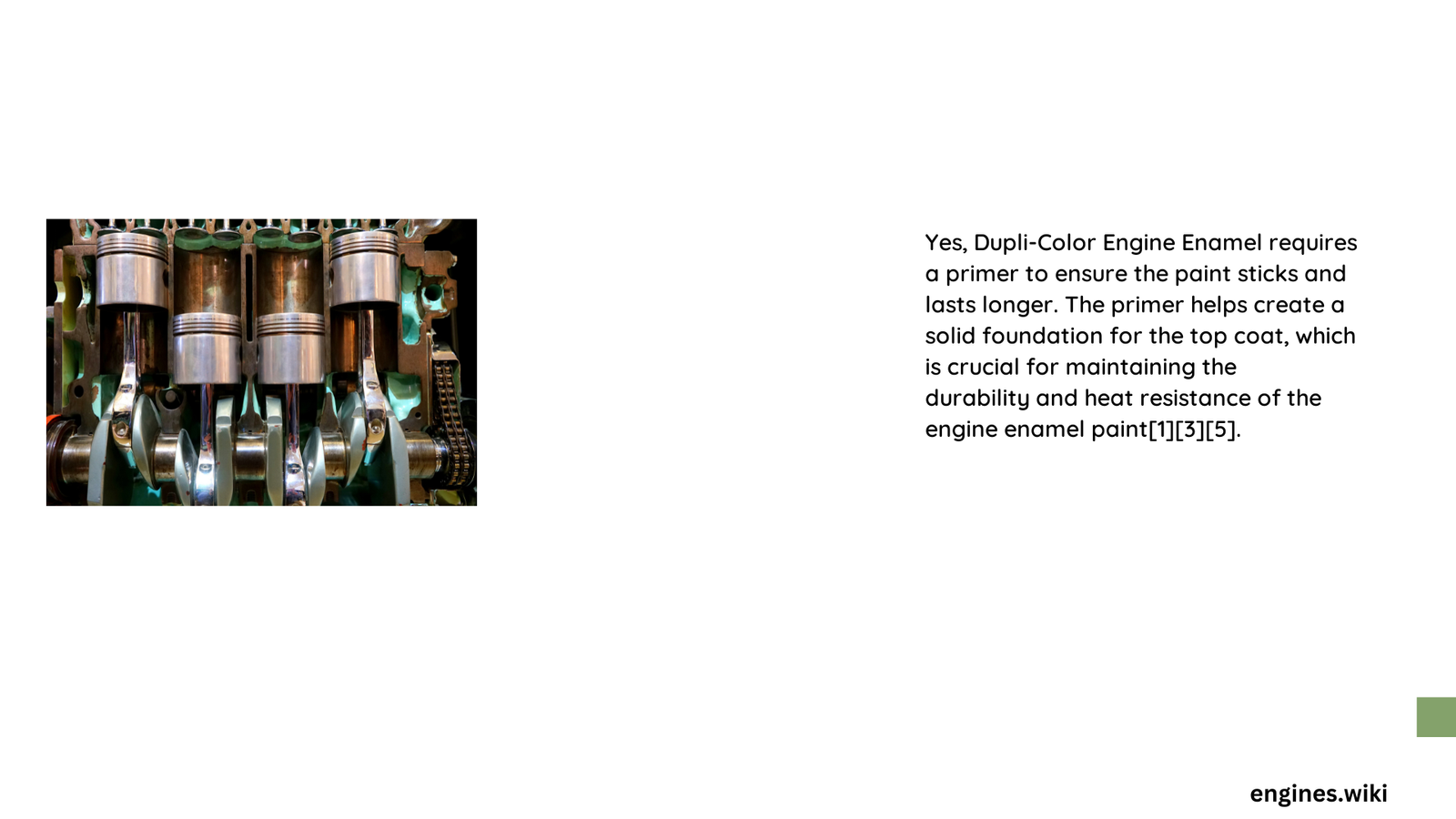Painting an engine requires precision and the right preparation. Duplicolor engine enamel demands a primer for optimal adhesion, durability, and professional-grade finish across various metal surfaces. Without proper primer, your engine paint risks premature failure, uneven coverage, and potential damage from heat and automotive fluids. This comprehensive guide will walk you through everything you need to know about using primer with Duplicolor engine enamel.
Why Does Duplicolor Engine Enamel Require Primer?
Primer serves as a critical foundation for engine paint, creating a robust bond between metal surfaces and the enamel coating. Here’s why primer is non-negotiable:
What Happens Without Primer?
- Poor Adhesion: Paint may peel or flake quickly
- Reduced Durability: Coating becomes vulnerable to environmental stress
- Uneven Finish: Surface imperfections remain visible
Key Primer Benefits
| Benefit | Description |
|---|---|
| Surface Preparation | Creates uniform base for paint application |
| Corrosion Protection | Prevents rust and metal degradation |
| Enhanced Longevity | Increases paint’s resistance to heat and chemicals |
How to Prepare Surface for Duplicolor Engine Enamel?

Proper surface preparation is crucial for successful paint application:
- Clean Thoroughly
- Remove grease and dirt using industrial degreaser
- Scrub with stiff brush
-
Rinse completely
-
Remove Rust
- Use wire brush or sandpaper
- Eliminate all surface rust
-
Wipe with grease remover
-
Select Appropriate Primer
- Choose high-temperature primer compatible with engine metals
- Ensure primer matches Duplicolor enamel specifications
What Primer Works Best with Duplicolor Engine Enamel?
Recommended primers include:
– High-temperature automotive primers
– Rust-inhibiting metal primers
– Duplicolor’s own engine primer series
Primer Application Tips
- Apply thin, even coats
- Allow recommended drying time
- Sand lightly between coats if necessary
- Ensure surface temperature is between 65-85°F
Can You Skip Primer Entirely?
Absolutely Not! Skipping primer risks:
– Immediate paint failure
– Reduced heat resistance
– Compromised aesthetic quality
Expert Recommendations
- Always use primer on aluminum, cast iron, and steel surfaces
- Follow manufacturer’s specific instructions
- Test paint compatibility on small area first
- Use in well-ventilated area with proper protective equipment
Common Mistakes to Avoid
- Painting over dirty surfaces
- Using incorrect primer type
- Applying paint too thickly
- Ignoring manufacturer’s recommended application techniques
Final Thoughts
Duplicolor engine enamel absolutely requires primer for professional, long-lasting results. Invest time in proper preparation to ensure your engine looks great and remains protected.
Pro Tip
When in doubt, consult Duplicolor’s technical support for specific recommendations tailored to your exact engine type and painting environment.
Reference:
– Duplicolor Official Website
– Automotive Paint Experts Guide
– Professional Mechanics Forum
